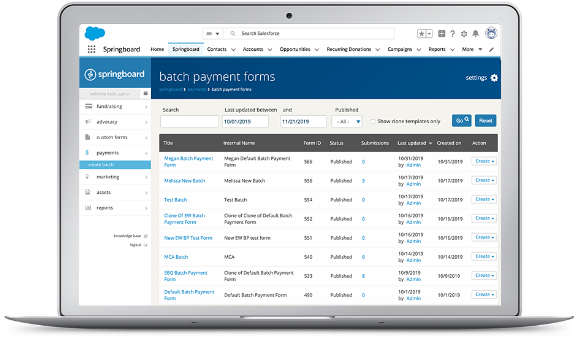5 Insights on Search

 PPC search has been a steady workhorse when it comes to donations-focused, down-funnel strategies: It’s relatively cost-efficient with a solid ROI (when done right). But what about all the fancy new stuff, like AI learning and audiences and voice? Having done some research of my own, I reached out to an old friend, Eric Werner, for an opinion. (Eric runs Werner Knows, a company dedicated to search, with his brother – how cool is that?).
PPC search has been a steady workhorse when it comes to donations-focused, down-funnel strategies: It’s relatively cost-efficient with a solid ROI (when done right). But what about all the fancy new stuff, like AI learning and audiences and voice? Having done some research of my own, I reached out to an old friend, Eric Werner, for an opinion. (Eric runs Werner Knows, a company dedicated to search, with his brother – how cool is that?).
We covered a lot of ground and got a few refreshing, scrappy insights on search to share with you:
- Small data: You’d be hard pressed to find a search-related piece that doesn’t mention AI and automation. But when it comes to search, don’t overlook the humble tactical opportunities of old-fashioned intelligence. “Small data” is not quite as sexy as super-smart AI data robots mining your data for brilliance. Yet, in search, there are lots of opportunities that may be pedestrian but can deliver in a significant way. As long as your channels are not operating in silos, paid search data can be reviewed manually in the context of the broader marketing mix to find opportunities to save money and improve results.
- Optimization: There are plenty of ways to optimize. What content is being shared organically or in social by your users? What does your search data tell you about specific queries for which you can get users one click closer to their desired outcome? Which keywords have sub-par paid search ROI but are strategically essential for your cause? Focus on improving ranking for these keywords in organic search! That type of broader view can help identify actionable, easy-to-apply, and under-utilized opportunities.
- Audience targeting: This is a very big deal. It allows you to target your search ads to specific audiences based on who they are, their interests, and habits. This type of match allows you to more accurately predict audiences’ intent, and that‘s some powerful stuff. But don’t abandon keywords approach either (they’ve been saying direct mail is dead for at least a decade and yet it’s still very much kicking). Keywords, when used wisely, can still deliver value: consider each keyword as a micro market, reflective of a user’s need that can be fulfilled. Learning how to get users to a page that really represents their needs is good business!
- Mobile: 60% of Google searches are done via mobile devices (that’s huge, as 5 years ago it was only about 34%) and mobile CTRs are a full percentage point higher than click-through rates on desktop. What to do with all that mobile goodness? Adjust bids depending on how your ads are converting (seems obvious, but betcha not every search campaign breaks out desktop and mobile). Also experiment with ad format, making sure that your ads are designed for how we use mobile devices. For example, always set up easy phone extensions for users to click through, and focus on engaging, relevant, pithy calls to action. Also keep in mind that anything that takes up more space, like using callout extensions, serves to increase click-through rate on small mobile screens. For fundraising campaigns, point your audiences to forms with ask amounts that match up with giving levels via mobile and desktop, as the amounts tend to differ.
- Voice search: So what about voice search, is it poised to dominate? What can we do to prepare our marketing as more and more people get comfortable with voice commands? Eric reports that he is not seeing much in the way of conversions from voice -- yet. But voice search can be a handy way to optimize your organic search. Voice search tends to be more conversational, so scouring your reports for questions that users ask (8% of Google searches are questions!) and answering those common questions in a succinct way can get you to the top. Another hot tip: You can look at the performance of voice search keywords by filtering for the phrase “ok google” in your Google Ads. Review this over time to see how it is increasing for your site. At the moment, don’t be surprised if you only see 20 – 30 per month.
Breaking news: Nonprofits have limited marketing budgets. I asked Eric, If one has a tiny, itty-bitty search budget, is it still worthwhile to get it started? His answer: Depends. If you have some data and learnings under your belt already, even a small budget can be effective. But if you have a small search budget and have never run ads before, setting them up incorrectly can be costly. This can send the internal message that search is not a good investment, while in reality you just haven’t gotten your groove yet.
To get your search off the ground, front-load the investment to get quick learnings and begin calibrating so that you can make a more effective dent later with even a very small investment. If you identify just a dozen essential keywords that convert well, you can run exact match campaigns even with a tiny budget. With even a little extra money, you can then throw into the mix remarketing lists for search ads.
BONUS Tip from The Expert. Google is of course the dominant source of search. However, Bing, while modest in scale can deliver solid ROAS (return on advertisement spending) because, depending on your topic, cost per click is lower. The cost of managing ads may be more than you are willing to take on, but to reduce time, effort, and cost, take your highest converting terms and ads from Google Ads and carry them over into other search engines.
And finally, a huge thank you to Eric Werner for his perspective and for contributing to this article. The advise is pleasantly grounding: Don’t go for the latest shiny toy, while overlooking the basics. A number of the current articles and best practices, with the best of intentions, are providing advice aimed at a very different scale (translation: large budget) and may not be applicable to modest or mid-size nonprofits. It’s always best to speak to someone who not only knows search engine marketing but also understands how these principles apply to the sector.

